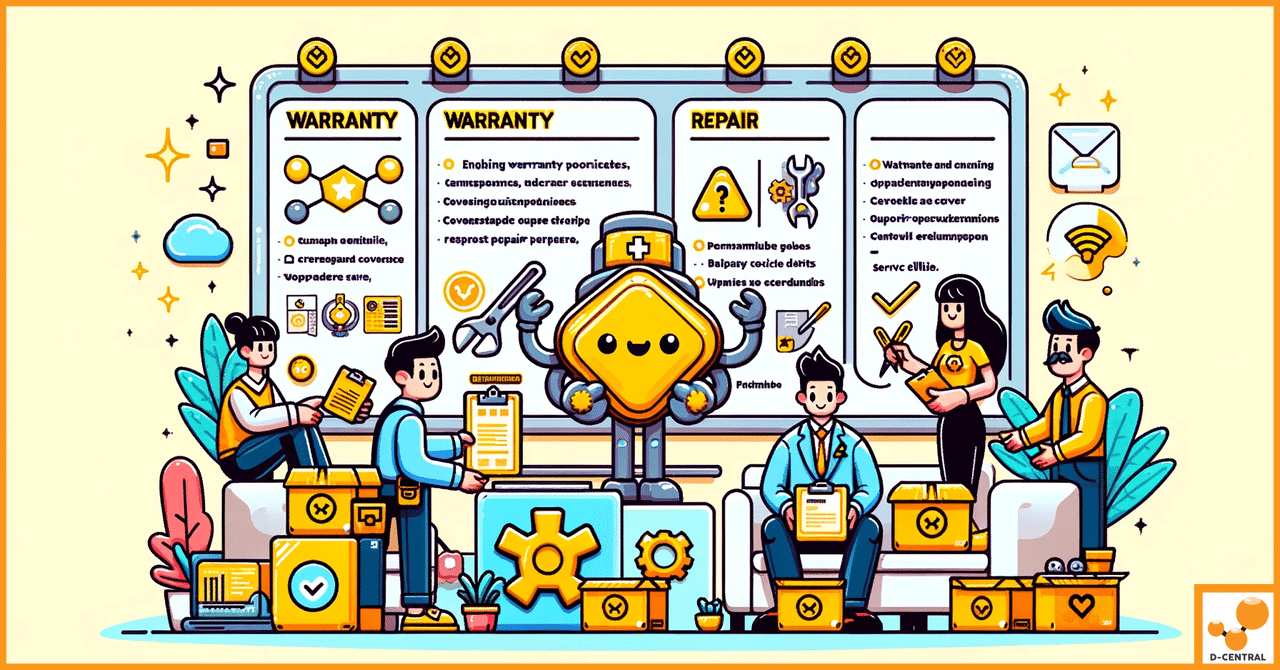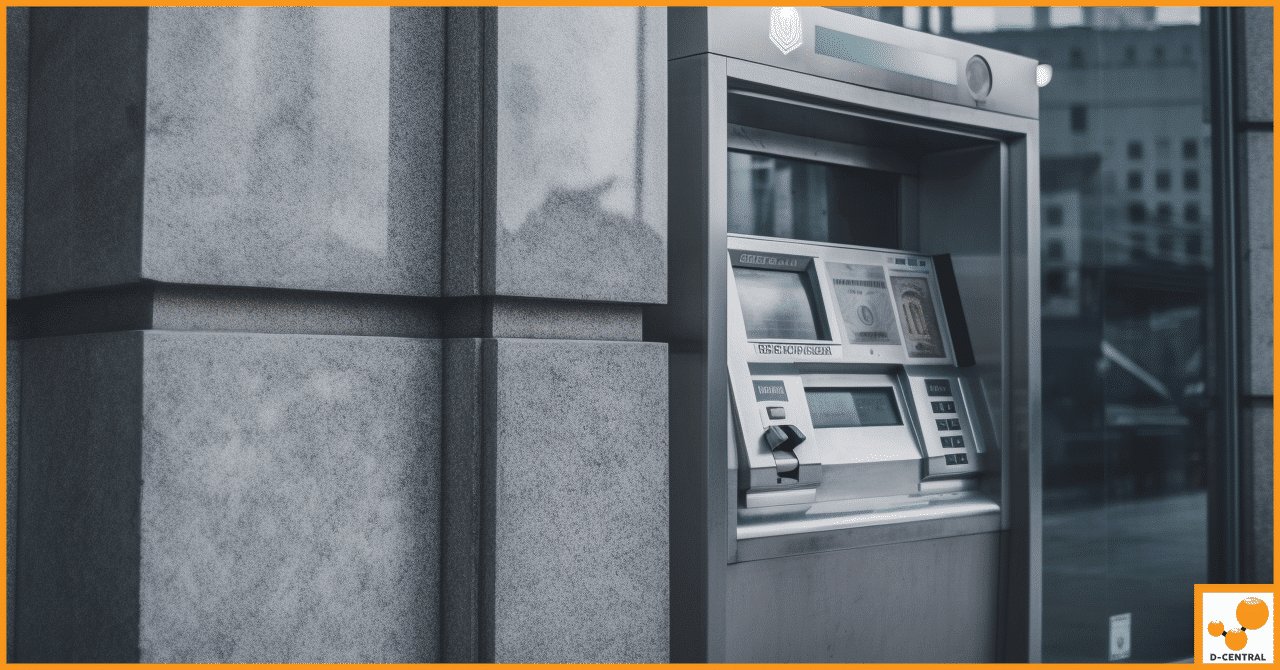
Stratum V2: A Comprehensive Guide to the Bitcoin Mining Protocol
Bitcoin mining, the backbone of the world’s premier cryptocurrency, has undergone a remarkable evolution since its inception. In the early
4479 Desserte Nord Autoroute 440, Laval, QC H7P 6E2

In the dynamic world of cryptocurrency mining, Antminer users face the critical task of maintaining their mining hardware to ensure optimal performance and minimal downtime. Understanding the nuances of warranty and repair policies for these sophisticated pieces of equipment is not just a matter of convenience but a necessity for maximizing profitability and operational efficiency. The realm of Bitcoin mining hardware, particularly Antminers, is fraught with complexities, from navigating warranty stipulations to making informed decisions about repair services. It’s here that the importance of having a trusted guide and support system becomes paramount.
Enter D-Central Technologies, a beacon for Antminer users in need of expert advice, reliable repair services, and comprehensive support. While D-Central is not an official BITMAIN warranty center, it presents a compelling alternative for miners seeking to address their hardware issues without the added burden of exorbitant shipping costs and extended downtime. The cost-effectiveness and convenience of D-Central’s local repair services make it an attractive option for miners, even for units still under warranty. The potential savings on shipping, coupled with the opportunity to minimize mining interruptions, positions D-Central as a vital resource in the mining community. This guide aims to illuminate the intricacies of warranty and repair service policies for Antminers, underscoring D-Central Technologies’ role in providing insightful information, practical solutions, and unwavering support to the mining community.
Navigating the warranty landscape for Antminer products is crucial for miners who rely on these powerful machines for their Bitcoin mining operations. A clear understanding of warranty policies ensures that users can make informed decisions regarding the care and maintenance of their hardware. Below, we delve into the essentials of Antminer warranty policies, covering everything from basic coverage to extended options.
Definition and Scope of Warranty: The Antminer warranty is a commitment from the manufacturer, Bitmain, to stand behind the quality and reliability of their products. This warranty covers any defects in materials and workmanship under normal use conditions. It’s a promise of remediation, usually in the form of repair, replacement, or refund, for products that fail to meet the specified performance standards.
Duration of Standard Warranty Periods: The standard warranty period for Antminer products typically spans 6 to 12 months from the date of purchase, depending on the model and terms set by Bitmain at the time of sale. It’s important for users to verify the specific warranty duration applicable to their model to ensure they are covered.
Inclusions: The warranty generally covers failures due to manufacturing defects or issues arising from normal use. This includes problems with the ASIC chips, control boards, and other integral components of the Antminer that are essential for its operation.
Exclusions: Common exclusions from warranty coverage include, but are not limited to, damage caused by external factors such as power surges, improper handling, modifications, or unauthorized repairs. Normal wear and tear, as well as issues resulting from failing to adhere to the operational guidelines provided by Bitmain, are also typically not covered.
Overview of Extended Warranty Services: For miners looking to secure their investment beyond the standard warranty period, extended warranties offer an additional layer of protection. These services extend the original warranty, providing continued coverage against potential defects and malfunctions.
How to Avail of Extended Warranties and Their Benefits: To avail of an extended warranty, Antminer users typically need to purchase the service from Bitmain or authorized dealers before the expiration of the original warranty. The benefits of opting for an extended warranty include prolonged peace of mind, potential savings on future repair costs, and the assurance that the mining operations can continue with minimal interruptions due to hardware issues.
Understanding the intricacies of Antminer warranty policies empowers users to navigate the complexities of Bitcoin mining with confidence. Whether it’s leveraging the standard warranty or opting for extended coverage, being well-informed about these policies is paramount for safeguarding your mining hardware and ensuring its longevity.
When it comes to maintaining the efficiency and longevity of Antminer hardware, having access to reliable repair services is indispensable. Understanding how to navigate these services can significantly reduce downtime and ensure a swift return to optimal mining operations. This section outlines the crucial steps and considerations involved in initiating repair requests, understanding repair costs, and managing repair times and tracking.
Step-by-Step Process to Submit a Repair Request:
Required Documentation and Information for Processing:
Overview of Potential Costs Associated with Repairs:
How Estimates are Provided and Factors Influencing Repair Costs:
Average Processing Times for Repair Services:
How to Track the Status of Your Repair Request:
Understanding these processes and considerations ensures that Antminer users can effectively manage repairs, minimize downtime, and maintain their mining operations’ efficiency.
Maintaining the operational efficiency of Antminer hardware requires a thorough understanding of the repair process, from diagnosis to post-repair warranties. This section delves into the procedures involved in diagnosing and repairing Antminers, the use of genuine replacement parts, and the warranty coverage post-repair, ensuring users are well-informed at every stage.
How Antminers are Diagnosed for Issues:
Common Repair Procedures and Quality Assurance Practices:
Information on Genuine Replacement Parts:
Policies on Part Replacements During Repairs:
Warranty Coverage on Repaired Components:
Guidelines for Ensuring Post-Repair Warranty Validity:
Understanding the repair process, from diagnosis to ensuring the validity of post-repair warranties, empowers Antminer users to make informed decisions regarding the maintenance and repair of their mining hardware. This knowledge is crucial for optimizing the longevity and efficiency of their mining operations.
For Antminer operators seeking convenience and minimal downtime, on-site repair services offer a valuable solution. These services bring expert technical support directly to your location, eliminating the need to ship your hardware for repairs. Understanding the availability, scope, and scheduling of these services is crucial for a seamless repair experience.
Availability: On-site repair services are typically available through select service providers, including some authorized by Bitmain and independent companies with a proven track record in Antminer repairs, like D-Central Technologies. The availability of these services can vary based on geographical location and the specific needs of your mining operation.
Scope: The scope of on-site repair services can include a wide range of hardware issues, from basic troubleshooting and component replacement to more complex system diagnostics and repairs. These services are designed to address the immediate repair needs while minimizing operational downtime.
Scheduling an On-Site Repair:
Preparing for an On-Site Repair:
By leveraging on-site repair services and adequately preparing for the technician’s visit, Antminer operators can enjoy the benefits of expert repairs with minimal disruption to their mining operations.
For Antminer operators, the allure of DIY repairs and maintenance can be strong, offering the promise of quick fixes and cost savings. However, navigating the line between what can be safely handled in-house and what requires professional intervention is critical. This section provides guidelines for DIY repairs and essential tips for preventive maintenance to ensure the longevity and efficiency of your Antminer units.
Guidelines for Identifying Issues Suitable for DIY Repairs:
Risks and Considerations for Undertaking Repairs Independently:
Routine Maintenance Practices to Avoid Frequent Repairs:
Importance of Using Genuine Parts and Following Manufacturer Guidelines:
While the DIY approach can be appealing, it’s essential to weigh the potential risks and benefits carefully. For complex issues or when in doubt, consulting with or hiring a professional service like D-Central Technologies can save time, protect your investment, and ensure the continued productivity of your mining operations. Regular preventive maintenance, using genuine parts, and adhering to manufacturer guidelines can significantly reduce the need for repairs and extend the life of your Antminers.
Navigating the complexities of Antminer warranty and repair policies can often leave miners with a host of questions. This section aims to address some of the most frequently asked questions, providing expert insights and practical advice to common concerns in the Antminer community.
The Antminer warranty typically covers defects in materials and workmanship under normal use conditions. This includes issues with the ASIC chips, control boards, and other integral components. It’s important to check your specific model’s warranty terms, as coverage can vary.
The standard warranty period for Antminer products usually ranges from 6 to 12 months from the date of purchase. However, this can differ based on the model and the terms specified by Bitmain at the time of sale.
Yes, Bitmain and some resellers offer extended warranty services for an additional cost. These services extend the original warranty, providing continued protection against potential defects and malfunctions.
The warranty generally excludes damage caused by external factors such as power surges, improper handling, modifications, or unauthorized repairs. Normal wear and tear and issues arising from non-compliance with operational guidelines are also not covered.
To initiate a repair request, you should first diagnose the issue and gather necessary details like the serial number and a description of the problem. Then, contact the manufacturer’s support team or your chosen repair service provider to submit your request, providing all required documentation.
If your Antminer is under warranty and the issue falls within the warranty coverage, repairs are usually free. However, for out-of-warranty repairs or issues not covered by the warranty, you will be responsible for the repair costs, including parts and labor.
Repair times can vary significantly based on the complexity of the issue, parts availability, and the service provider’s workload. On average, repairs can take from a few days to several weeks.
While minor issues and basic maintenance tasks can often be handled DIY, more complex repairs should be left to professionals. Unauthorized or improper repairs can void your warranty and potentially cause further damage to your unit.
Most repair service providers offer an online tracking system where you can check the status of your repair by entering your repair ticket or reference number. You may also receive regular updates via email or SMS.
For out-of-warranty repairs, consider service providers like D-Central Technologies, which offer cost-effective repair services. Always ensure that the service provider uses genuine parts and has a good track record with Antminer repairs.
Navigating the intricacies of Antminer warranty and repair policies is an essential aspect of maintaining the efficiency and longevity of your cryptocurrency mining hardware. A thorough understanding of these policies not only ensures that you are well-prepared to address any issues that may arise but also empowers you to make informed decisions that can significantly impact the productivity and profitability of your mining operations.
The landscape of Antminer repairs and maintenance can be complex, with various factors to consider, from diagnosing issues and initiating repair requests to understanding the scope of warranty coverage and the implications of undertaking DIY repairs. In this context, the value of expert guidance and reliable repair services cannot be overstated.
D-Central Technologies stands out as a beacon for miners seeking professional, trustworthy support for their Antminer repair needs. While not a Bitmain warranty center, D-Central offers a compelling alternative with its cost-effective, local repair services that minimize downtime and operational disruptions. The expertise and tailored solutions provided by D-Central ensure that your mining hardware is in capable hands, allowing you to focus on optimizing your mining strategies and maximizing returns.
We encourage Antminer users and cryptocurrency miners to explore the range of services offered by D-Central Technologies. Whether you’re in need of repair services, looking for maintenance advice, or seeking to enhance your mining operations, D-Central is equipped to support your goals with its comprehensive suite of solutions.
Embrace the peace of mind that comes with having a trusted partner like D-Central Technologies by your side, ensuring that your mining hardware remains at peak performance, now and in the future.
DISCLAIMER: D-Central Technologies and its associated content, including this blog, do not serve as financial advisors or official investment advisors. The insights and opinions shared here or by any guests featured in our content are provided purely for informational and educational purposes. Such communications should not be interpreted as financial, investment, legal, tax, or any form of specific advice. We are committed to advancing the knowledge and understanding of Bitcoin and its potential impact on society. However, we urge our community to proceed with caution and informed judgment in all related endeavors.
Related Posts

Bitcoin mining, the backbone of the world’s premier cryptocurrency, has undergone a remarkable evolution since its inception. In the early

As the landscape of global economy continues to evolve, certain financial principles remain applicable even with the passing of centuries.

The banking sector has experienced a series of disruptions in recent months, with the unfortunate events surrounding Silvergate, Signature, and